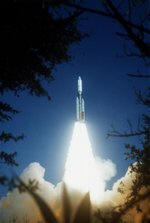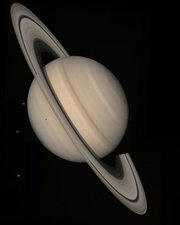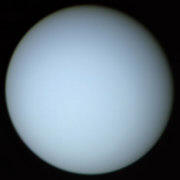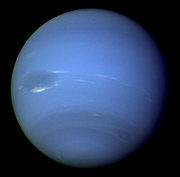|
> History > Voyager 2 > Recent & Future Developments
|
The Voyager 2 spacecraft was launched in 1977. It is identical to its sister Voyager program craft, Voyager 1, but Voyager 2 followed a somewhat different trajectory during its Saturn encounter, bypassing a close encounter with Titan to take advantage of a gravitational slingshot to travel on to Uranus and Neptune. It thus became the first and so far only probe to visit those two planets and the first spacecraft to make the Grand Tour of Jupiter, Saturn, Uranus and Neptune. This was possible only due to a rare geometric arrangement of those four planets that only occurs once every 175 years.
Mission, planning and launchVoyager 2 was originally planned to be Mariner 12, part of
the Mariner program. [Top] JupiterThe closest approach to Jupiter occurred on July 9, 1979. [Top] SaturnThe closest approach to Saturn occurred on August 25, 1981.
While behind Saturn (as viewed from Earth), Voyager 2 probed Saturn's
upper atmosphere with its radar, to measure temperature and density
profiles. Voyager 2 found that at the highest levels (70 millibars or 7.0
kilopascals) Saturn's temperature was 70 kelvins, while at the deepest
levels measured (1200 millibars or 120 kilopascals) the temperature
increased to 143 kelvins. The North pole was found to be 10 kelvins
cooler, although this may be seasonal. [Top] UranusThe closest approach to Uranus occurred on January 24, 1986.
[Top] NeptuneThe closest approach to Neptune occurred on August 25, 1989. Since this was the last major planet Voyager 2 could visit, it was decided to make a close flyby of the moon Triton, regardless of the consequences to the trajectory, as with Voyager 1's encounter with Saturn and its moon Titan. This was a wise decision, as Triton turned out to have a fascinating surface.
[Top] Escaping the Solar SystemSince its planetary mission is over, Voyager 2 is now
described as working on an Interspace Mission, which NASA is using to find
out what the solar system is like beyond the heliosphere.
|



